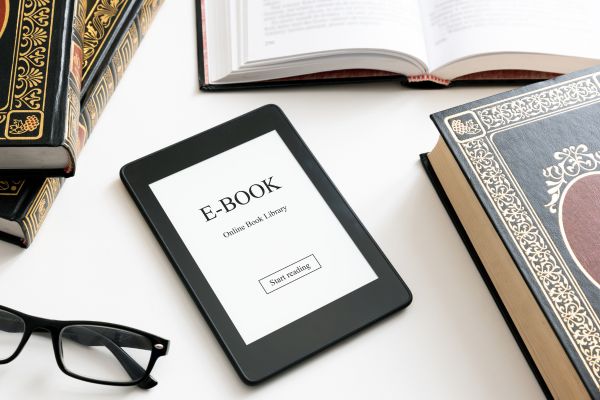The way people consume books has transformed significantly over the past two decades. E-books and audiobooks have gained immense popularity, offering a more flexible and accessible way of reading. With advancements in technology, readers no longer need to carry physical books—they can store thousands of titles on their devices or listen to audiobooks on the go. This shift has redefined reading habits, making literature more accessible than ever before.

The Rise of E-Books and Audiobooks
The digital revolution has fueled the expansion of e-books and audiobooks, with platforms like Kindle, Apple Books, and Audible leading the market. Global e-book sales are expected to reach $15.3 billion by 2027, while the audiobook industry is also witnessing exponential growth. This shift is largely driven by the increased use of smartphones, tablets, and e-readers, which provide instant access to digital libraries.
Subscription services like Kindle Unlimited and Audible offer readers and listeners unlimited choices at an affordable price, further boosting the adoption of these formats. Unlike traditional books, which require printing and distribution, digital books are available instantly with just a few clicks.
Why E-Books Are Gaining Popularity
E-books have revolutionized reading by offering unmatched convenience. Readers can carry an entire library in their pocket, eliminating the need for bulky bookshelves. The ability to customize font sizes, adjust brightness, and switch to dark mode makes reading more comfortable, especially for those with visual impairments.
Additionally, e-books are more affordable than printed books, as they eliminate printing and shipping costs. They also contribute to sustainability efforts by reducing paper consumption, making them an environmentally friendly choice.
The Growing Demand for Audiobooks
Audiobooks have emerged as a game-changer for those with busy lifestyles. Whether commuting, exercising, or doing household chores, people can listen to books without setting aside dedicated reading time. This hands-free approach to reading has led to a 25% increase in audiobook consumption in the last five years.
Advancements in AI-generated narration and professional voice acting have also enhanced the listening experience. The ability to adjust narration speed, bookmark sections, and sync progress across devices makes audiobooks highly user-friendly.

Impact on Traditional Publishing
The rise of digital books has disrupted the traditional publishing industry. Publishers have adapted by releasing e-book versions alongside print editions and investing in audiobook production. Self-publishing has also flourished, with platforms like Amazon Kindle Direct Publishing allowing authors to reach global audiences without relying on traditional publishers.
However, despite digital growth, printed books still hold sentimental value. Many readers enjoy the tangible experience of flipping pages, and bookstores remain an integral part of the literary culture. The future likely holds a balance where digital and print formats coexist, catering to diverse reader preferences.
How E-Books and Audiobooks Support Learning
Beyond leisure reading, e-books and audiobooks have made significant contributions to education. Digital books provide interactive learning experiences with embedded videos, hyperlinks, and quizzes, enhancing comprehension. Audiobooks, on the other hand, help students improve listening skills and pronunciation, making them valuable tools for language learners.
E-books and audiobooks also improve accessibility for individuals with disabilities. Features like text-to-speech and voice narration support visually impaired readers, ensuring that literature remains inclusive for everyone.
E-books and Audiobooks Have Reshaped Reading
E-books and audiobooks have reshaped the way people consume literature, offering convenience, accessibility, and affordability. While traditional books continue to hold their charm, digital reading formats are here to stay, catering to modern lifestyles. With continuous advancements in technology, the future of reading will likely be a blend of print and digital formats, ensuring that stories and knowledge remain easily accessible to all.




